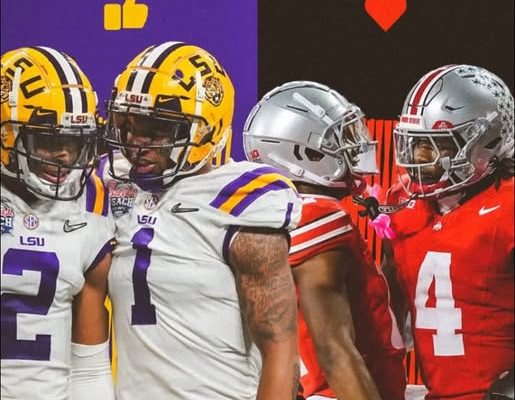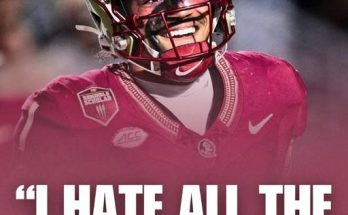The comparison feels, at first, like sacrilege, a bridge too far for any reasonable football mind to cross. To invoke the names of Justin Jefferson and Ja’Marr Chase is to speak of the platonic ideal of the modern wide receiver duo. Their 2019 season at LSU was not merely a collegiate campaign; it was a seismic event that recalibrated our understanding of offensive potential. Jefferson, the silky-smooth route technician with vice grips for hands, and Chase, the bull-strong, deep-threat savant, didn’t just beat opponents; they demoralized them, leaving a trail of broken coverages and shattered confidence on their way to a national championship. Their transition to the NFL was seamless, immediate, and historic, each becoming the definitive top receiver in the league almost from the moment they stepped on the field.
Yet, here in the heart of another season, in the crucible of a different program with its own championship aspirations, a new pair is emerging, and their play demands a conversation that transcends mere potential and ventures into the realm of direct, if premature, comparison. Jeremiah Smith and Carnell Tate are not just playing well; they are playing every bit as well—and in certain, crucial aspects, perhaps even better—than the ghost of Jefferson and Chase that haunts every elite receiving corps that follows.
To make such a claim is not to erase history, but to analyze the present with a clear eye. The Jefferson-Chase partnership was built on a foundation of overwhelming, explosive production. They were a hurricane of yardage and touchdowns, a testament to the sheer, unadulterated power of Joe Burrow’s right arm and their own otherworldly talent. Their greatness was quantified in the record books: Chase’s 1,780 yards and 20 touchdowns, Jefferson’s 1,540 yards and 18 touchdowns. It was a spectacle of statistical dominance that may never be replicated.
Smith and Tate, however, are authoring a different kind of masterpiece, one defined by a terrifying, almost unnerving, level of polish and completeness at such a tender age. While Jefferson and Chase were forces of nature, Smith and Tate are surgical instruments. Watch Smith, the true freshman who arrived on campus with more hype than a summer blockbuster and has somehow managed to exceed it. His game is not predicated on one overwhelming trait, but on the absence of a weakness. At 6’3″, his frame is already NFL-ready, but it is his body control that defies physics. He plays the game with the graceful precision of a decade-long veteran, his routes crisp and deliberate, his understanding of leverage and defensive positioning advanced beyond his years. He doesn’t just make contested catches; he makes them look routine, using his frame to shield defenders with a veteran’s savvy. The comparison to Chase is inevitable given the LSU lineage and the alpha-dog mentality, but Smith’s game is arguably more refined at this stage. Chase was a powerhouse, a player who could and would simply outmuscle and outrun you. Smith possesses that same physical dominance, but it is channeled through a technician’s filter, making him a more consistently reliable and nuanced target, even as a first-year player.
Then there is Carnell Tate, the sophomore whose own development has been accelerated by Smith’s arrival, much as Jefferson’s was by Chase’s presence. Tate is the embodiment of smooth efficiency. If Smith is the powerful, precision-guided missile, Tate is the stealth fighter, gliding through defenses with an effortless stride that belies his suddenness. His route-running is a thing of beauty; he creates separation not with raw, blistering speed, but with expert footwork, head fakes, and an innate understanding of how to set up defensive backs. He is the chain-mover, the safety blanket with the clutch gene, whose hands seem to be coated in velvet. The comparison to Jefferson is apt here—both are masters of the craft, players who win with intelligence and flawless technique. Yet, one could argue that Tate’s body control and catch radius are even more pronounced than Jefferson’s were at the same point in his career. He plays with a quiet, unshakable confidence that suggests he expects to make every play, a mentality that mirrors the stoic brilliance of Jefferson in his Minnesota Vikings prime.



